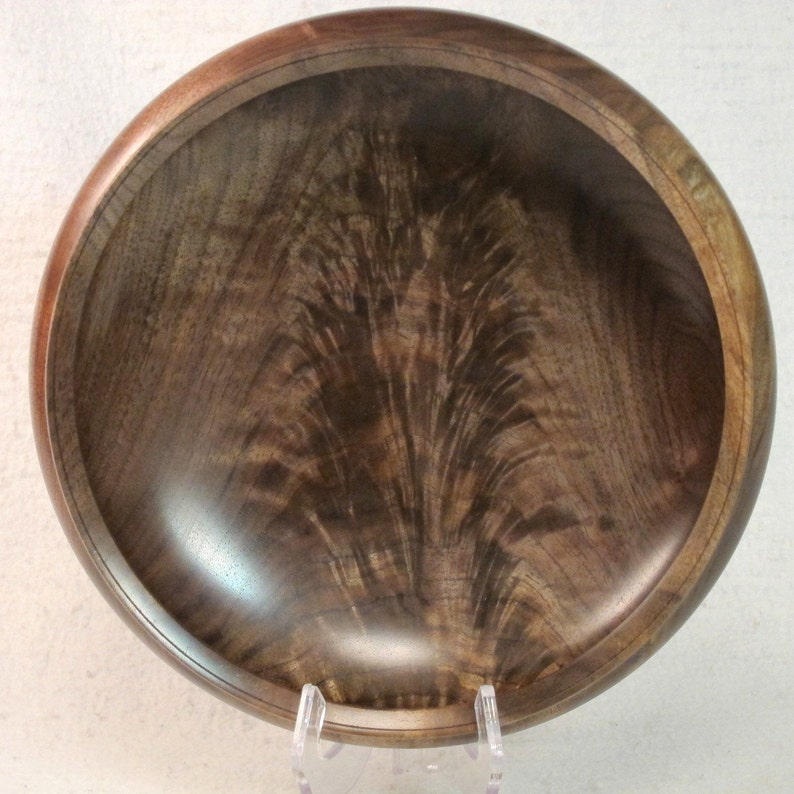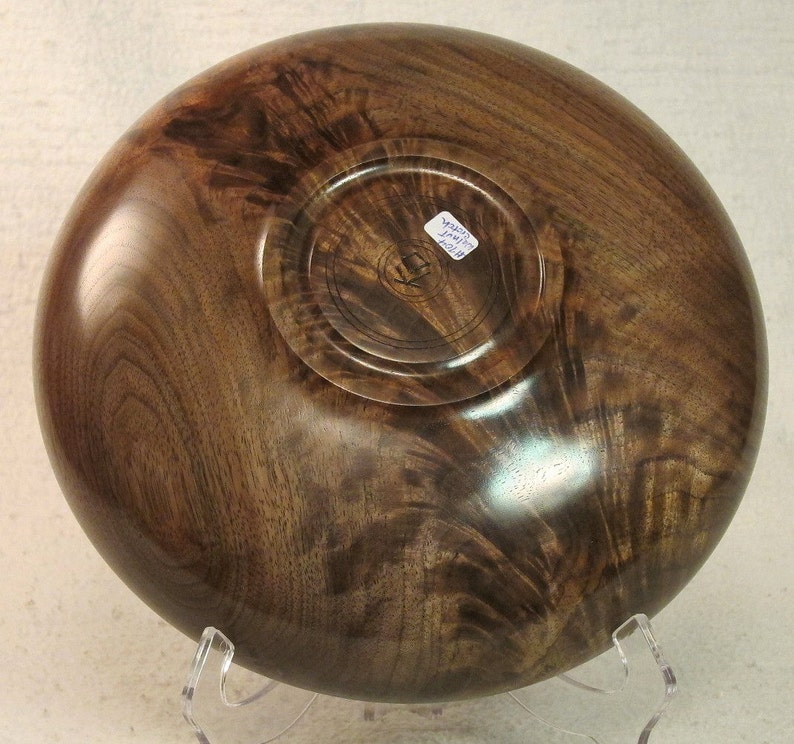I cut up a dead black walnut tree this morning. About 16 inches in diameter. There was a point on the trunk where it split into two large trunks. At this point, I cut above and below the crotch. I could get a bowl blank about 20 + inches in diameter out of this. I remember reading somewhere that crotch walnut is a terrible thing to turn. But I have turned such pieces without any major problems. Never anything even half so big however. I just do not remember why it was supposed to be a problem to turn.
-
It's time to cast your vote in the January 2025 Turning Challenge. (click here for details) -
Conversations are now Direct Messages (click here for details) -
Congratulations to Alan Weinberg for "Elm Burl Bowl" being selected as Turning of the Week for January 27, 2025 (click here for details) -
Welcome new registering member. Your username must be your real First and Last name (for example: John Doe). "Screen names" and "handles" are not allowed and your registration will be deleted if you don't use your real name. Also, do not use all caps nor all lower case.
You are using an out of date browser. It may not display this or other websites correctly.
You should upgrade or use an alternative browser.
You should upgrade or use an alternative browser.
turning crotch walnut
- Thread starter Perry Hilbert
- Start date
Perry,
Usually you end up with (2) bowl blanks if you cut the section in half leaving (2) Y-shaped crotch pieces. This normally provides really nice crotch figure in both pieces. When turning the bowl in the conventional manor you end up removing a considerable amount of the crotch figure and it ends up on the floor in wood shavings. You might want to study the wood grain in both pieces and decide then on how to proceed, you could possibly core the crotch pieces and save the interior crotch grain pieces for other projects. You could possibly cut a slab from the center section and have a piece you could turn into a platter and turn the remainder of the Y-crotch pieces into shallower bowls. You still need to deal with the pith like any other wood, you can always end up with some spindle blanks or several flat boards by removing the pith from the center section.
Usually you end up with (2) bowl blanks if you cut the section in half leaving (2) Y-shaped crotch pieces. This normally provides really nice crotch figure in both pieces. When turning the bowl in the conventional manor you end up removing a considerable amount of the crotch figure and it ends up on the floor in wood shavings. You might want to study the wood grain in both pieces and decide then on how to proceed, you could possibly core the crotch pieces and save the interior crotch grain pieces for other projects. You could possibly cut a slab from the center section and have a piece you could turn into a platter and turn the remainder of the Y-crotch pieces into shallower bowls. You still need to deal with the pith like any other wood, you can always end up with some spindle blanks or several flat boards by removing the pith from the center section.
"Y" crotches have bark inclusions and can split apart. "U" crotches will have solid wood and turn wonderful.
- Joined
- Apr 27, 2004
- Messages
- 9,095
- Likes
- 5,656
- Location
- Lakeland, Florida
- Website
- www.hockenberywoodturning.com
I’ve not had any particular problem turning walnut. Keeping the bark on can be challenging.
I like to get it fresh while the sap ring is white.
Be sure there is no structural issues with bark inclusions
with walnut crotches I have turned Ne Bowls with three high rims somewhat heart shaped.,
Hollow forms with the crotch figure on the top.
Cut rim bowls with the figure in the bottom.
Platters with the crotch figure
the crotch figure varies but is fairly thin Sometimes an 1” thick sometimes 2” or more.
I assume you are familiar with turning Ne bowls from crotches. In case you are not this thread In the tips and techniques is on Ne Bowls from crotches. It has a video of a demo on Ne crotch bowls and slides I use in the demo showing the blank preparation and centering the bowl in the crotch.
http://www.aawforum.org/community/index.php?threads/naural-edge-bowl-from-a-crotch.11058/
I like to get it fresh while the sap ring is white.
Be sure there is no structural issues with bark inclusions
with walnut crotches I have turned Ne Bowls with three high rims somewhat heart shaped.,
Hollow forms with the crotch figure on the top.
Cut rim bowls with the figure in the bottom.
Platters with the crotch figure
the crotch figure varies but is fairly thin Sometimes an 1” thick sometimes 2” or more.
I assume you are familiar with turning Ne bowls from crotches. In case you are not this thread In the tips and techniques is on Ne Bowls from crotches. It has a video of a demo on Ne crotch bowls and slides I use in the demo showing the blank preparation and centering the bowl in the crotch.
http://www.aawforum.org/community/index.php?threads/naural-edge-bowl-from-a-crotch.11058/
Last edited:
I seldom get walnut crotch, and appreciate it when I do.....I've not found it to turn much different than any other wood with radical grain patterns.......
-----odie-----


-----odie-----


Walnut seems to dull all tools more than most other woods. Maybe in part because it is a bit acidic and/or it can have a higher silica content. Other than that, the crotch can have varied grain rather than linear/straight grain. Sharp tools a must for final cuts. I try to cut down the center of the 3 piths, and the cut line is generally the bottom of the bowl, which is how you get the prettiest crotch patterns. I did get one walnut tree some years back, with the two branches being maybe 20 inch diameter, and the trunk 30 or so. Not a bit of feather in it. It was down in a rather steep valley, and apparently didn't get enough wind to form the feather. Trees out in the flat lands will tend to have more feather.
robo hippy
robo hippy
Maybe in part because it is a bit acidic and/or it can have a higher silica content.
You know, robo.......I've noticed this, too......when roughing very wet unseasoned walnut. Quite often, when roughing unseasoned walnut, I will have to go over the bedways with some steel wool to clean up the acidic residue left by the walnut. I use graphite powder to lubricate the bedways, and allow the banjo to slide easily, and that needs to be re-applied, as well.....
-----odie-----
